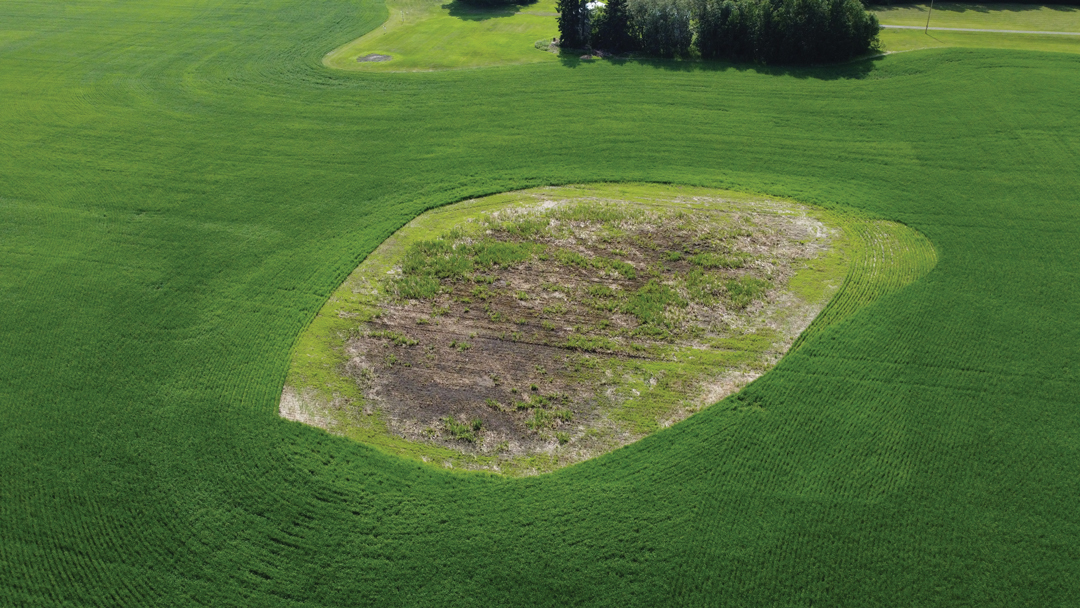GRAIN TRANSPORT GURU
BY IAN DOIG • ILLUSTRATION BY EMILY CHU
A well-known voice in the grain transport sector, Mark Hemmes began a more-than-two-decade stint in the rail industry as a post-university summer employee with CN Rail. Much of this time was spent in marketing, but he also worked as a train master and superintendent. In 1999, he and a co-worker left to launch the consulting firm Hemmes now heads.
Since June 1, 2001, Quorum Corporation has been contracted to serve as an independent monitor of the Prairie grain handling and transportation system for the federal government. Edmonton-based Quorum’s six-person monitoring team consults with more than 40 key stakeholder groups throughout the year, develops weekly, monthly and annual reports and produces additional studies of rail performance. Hemmes is frequently asked to comment on grain transport issues.
GrainsWest: How difficult is it to collect the massive amount of data required to monitor grain transport?
Mark Hemmes: Railways are data-intensive businesses. When we started in 2001, we probably spent the first year figuring out the best way to capture the data, store it and make it usable for ongoing analysis. That’s why we have a huge data warehouse and an IT manager. He has done a phenomenal job.
We don’t own the data; we collect it on behalf of the industry. It took a long while to gain trust, because a lot of it is very commercially sensitive. So, we have some very, very tight security protocols in place.
GW: How variable has the efficiency and timeliness of the grain transport system been in recent years?
MH: Last year was great for moving volume but there will be very high vessel demurrage bills for the last crop year. There were probably a lot of out-of-contract penalties paid because the railways didn’t get the traffic to port in a timely fashion.
As volumes continue to climb, which is a good thing, we hope for greater consistency in service. A lot of grain companies say, ‘I don’t really care if it takes five or 10 days to get it there but just tell me how many days so I can plan accordingly. When you tell me it’s going to take five days and it takes 12, that’s a week’s worth of vessel demurrage I’ve got to pay.’ Last year, the average rate was about $19,000 a day. It adds up.
GW: Quorum compiles 250 key metrics related to grain handling and transport. Which are the best indicators of the health of the system?
MH: How many vessels are sitting out on the West Coast? How long have they been there? What is the balance of the stocks between the country and the port? When, suddenly, we see port stocks going down, we have a measurement for that. And when the stocks in the country are going up, that’s an alarm bell that tells us it’s out of balance. It usually happens right ahead of the vessel count starting to really rise, so you get this imbalance.
We’re always counting how many cars are loaded and unloaded at the port every day, but we focus on the weekly count. When that number goes down again, it’s almost always followed by an increase in the number of vessels that are waiting.
We also closely watch order fulfillment, [which the Ag Transport Coalition tracks]. How many cars did the grain companies order, against how many cars the railway supplied? When we see a decrease in the order fulfillment rate, we’re in trouble.
There’s a yin and yang in this. Through the years, there have been times where both railways burned the wheels off the cars. Weather didn’t make a difference, and everything just worked. But then you’ve got years like last year where, for no apparent reason, things didn’t move.
GW: When you have criticisms, how responsive to Quorum’s insight and advice are government and supply chain players?
MH: Quite often what we say, the railways argue the other side. Grain companies do not always agree with us, but we’re there to provide advice.
A lot of the stuff we’ve recommended has [been implemented], but policy development is a very slow process. Though I initially found it frustrating, I understand. I’ve witnessed rushed policy that didn’t make sense.
GW: You have also noted the rail industry’s resilience and ability to recover following service disruptions must be strong to maintain its reputation with trading partners. How are the rail companies doing?
MH: The past crop year’s performance suggests they still aren’t there. I criticize them, saying they don’t have the resiliency or the redundancy to serve the marketplace, but I also understand their perspective. To balance the demands of shareholders they walk a tightrope. How much redundancy do they put in place to satisfy both sides? I have a certain amount of sympathy—not a lot—for the box they’re in.
Last year they got into trouble for what really amounts to minor reasons. They didn’t have the resources in place: the crews, the motor power. In some cases, they didn’t have enough cars, and it becomes a vicious cycle when you have a massive derailment or bad weather. They have to make sure they’ve got the resources in place to recover after an outage or malaise that could be totally out of their control.
GW: You have cited infrastructure improvement as necessary for Canada to remain competitive in international ag trade. How is the country doing in this area?
MH: Personally, I think we move too slow. There are key pieces of infrastructure that need to be replaced or improved, but we like to study it to death until it’s right at the precipice.
[Billions of dollars] in infrastructure has been built by shippers, and that’s at risk because access to the North Shore in Vancouver hasn’t been addressed. And the New Westminster Bridge needs to be replaced. If it gets knocked over, a third of the traffic into the Port of Vancouver will be affected.
Any other country would jump on that stuff just to mitigate risk. We seem to have a higher tolerance for that kind of risk. Sooner or later, one of these things will bite us in the butt big-time. I’m hopeful this government will address those sorts of things.
GW: Rail companies take a lot of heat from the ag sector, but what positives should be noted about their
performance?
MH: If the criticism is constructive and based on data, it’s fair. I would like to think by continuing to point it out this has made railways better at what they do. We want them to do better. Experience tells us they can do better because they have done better.
GW: What are the implications as the volume of grain movement increases annually?
MH: What it says is we’re doing something right.
I was never a Canadian Wheat Board basher, but if you look at the 20 years before 2012 [the dissolution of single-desk grain marketing], the average rate of growth was about one per cent a year. Since 2012, the average rate of growth is, perhaps conservatively, a little better than three per cent per year.
A lot of people suggest the country elevator network is overbuilt. I’m not one of those people. The grain companies have positioned themselves well for the future. The same with the terminal network. Vancouver, Prince Rupert and Thunder Bay are all well positioned to take us into the future quite comfortably so long as the railways do their part. If we keep pointing out the places where they’re not keeping up, we’re well positioned for at least the next 10 years.







Comments